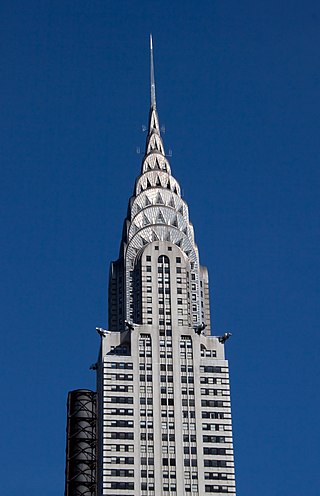
Art Deco, short for the French Arts décoratifs, is a style of visual arts, architecture, and product design, that first appeared in Paris in the 1910s, and flourished in the United States and Europe during the 1920s to early 1930s. Through styling and design of the exterior and interior of anything from large structures to small objects, including how people look, Art Deco has influenced bridges, buildings, ships, ocean liners, trains, cars, trucks, buses, furniture, and everyday objects including radios and vacuum cleaners.

Charles-Édouard Jeanneret, known as Le Corbusier, was a Swiss-French architect, designer, painter, urban planner and writer, who was one of the pioneers of what is now regarded as modern architecture. He was born in Switzerland and acquired French nationality by naturalization on 19 September 1930. His career spanned five decades, in which he designed buildings in Europe, Japan, India, as well as North and South America. He considered that "the roots of modern architecture are to be found in Viollet-le-Duc".

1 Wall Street is a mostly residential skyscraper in the Financial District of Lower Manhattan, New York City, on the eastern side of Broadway between Wall Street and Exchange Place. 1 Wall Street, designed in the Art Deco style, is 654 feet (199 m) tall and consists of two sections. The original 50-story building was designed by Ralph Thomas Walker of the firm Voorhees, Gmelin and Walker and constructed between 1929 and 1931, while a 36-story annex to the south was designed by successor firm Voorhees, Walker Smith Smith & Haines and built between 1963 and 1965.
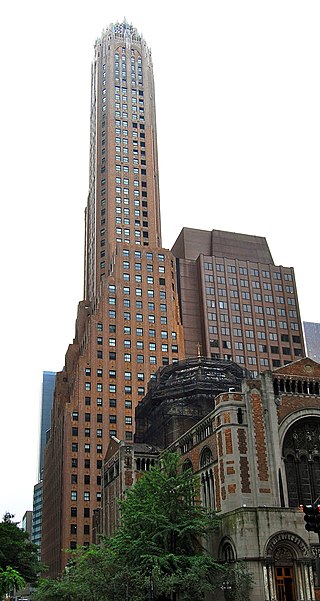
The General Electric Building, also known as 570 Lexington Avenue, is a skyscraper at the southwestern corner of Lexington Avenue and 51st Street in Midtown Manhattan, New York City. The building, designed by Cross & Cross and completed in 1931, was known as the RCA Victor Building during its construction. The General Electric Building is sometimes known by its address to avoid confusion with 30 Rockefeller Plaza, which was once known as the GE Building.

The Sir Jamsetjee Jeejeebhoy School of Art is the oldest art institution in Mumbai, India, and is affiliated with the University of Mumbai. The school grants bachelor's (B.F.A) degrees in Painting, ceramic, Metal work, Interior decoration, Textile design and Sculpture as well as Master's degrees (M.F.A) in Portraiture, Creative Painting, Murals, Sculpture, and Printmaking.

Claude Batley F.R.I.B.A., F.I.A.A., was an English architect who as practitioner, teacher and President of the Indian Institute of Architects from 1921 to 1923, played an influential role in development of modern architecture in India in the first half of the 20th century.

Chennai architecture is a confluence of many architectural styles. From ancient Tamil temples built by the Pallavas, to the Indo-Saracenic style of the colonial era, to 20th-century steel and chrome of skyscrapers. Chennai has a colonial core in the port area, surrounded by progressively newer areas as one travels away from the port, punctuated with old temples, churches and mosques.
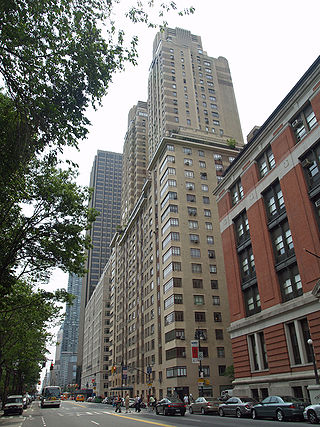
The Century is an apartment building at 25 Central Park West, between 62nd and 63rd Streets, adjacent to Central Park on the Upper West Side of Manhattan in New York City. It was constructed from 1930 to 1931 at a cost of $6.5 million and designed by the firm of Irwin S. Chanin in the Art Deco style. The Century is 30 stories tall, with twin towers rising from a 19-story base. The building is a contributing property to the Central Park West Historic District, a National Register of Historic Places–listed district, and is a New York City designated landmark.
The architecture of Mumbai blends Gothic, Victorian, Art Deco, Indo-Saracenic & Contemporary architectural styles. Many buildings, structures and historical monuments remain from the colonial era. Mumbai, after Miami, has the second largest number of Art Deco buildings in the world.
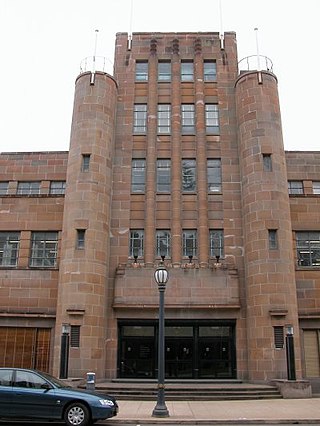
University House is a heritage-listed building in Newcastle in New South Wales, Australia. Located on the corner of King Street and Auckland Street, it was designed by architect Emil Sodersten in association with local architectural practice Pitt and Merewether. An example of Art Deco style, the design was inspired by the streamlined functionalism of contemporary architecture in Europe.
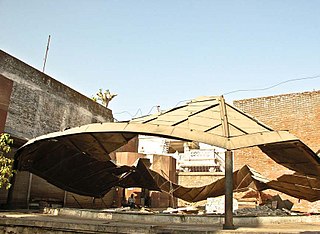
The Calico Dome, also known as Calico-shop Dome, was a geodesic dome on Relief Road, Ahmedabad, Gujarat, India. Designed by Gira Sarabhai and Gautam Sarabhai, with an inspiration from Buckminster Fuller's works, it was a combined showroom and shop for Calico Mills. It was inaugurated in 1963 and fell into disrepair when mills was closed in 1990s. It later collapsed. As of 2019, it is being reconstructed by the Ahmedabad Municipal Corporation as an industrial heritage site.
Arthur Oakley Coltman was an English architect practising in Malaya for 32 years where he worked as manager of the architecture firm Booty Edwards & Partners. He arrived in Malaya in 1925 and retired in 1957.
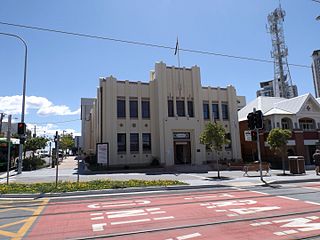
Southport Town Hall is a heritage-listed former town hall at Nerang Street, Southport, Gold Coast City, Queensland, Australia. It was designed by Hall & Phillips and built in 1935 by H Cheetham. It is also known as Gold Coast City Hall, Gold Coast Town Hall, and South Coast Town Hall. It was added to the Queensland Heritage Register on 5 October 1998.
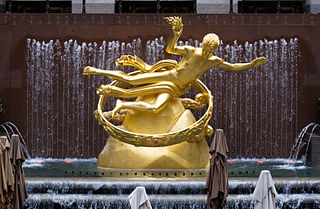
The Art Deco style, which originated in France just before World War I, had an important impact on architecture and design in the United States in the 1920s and 1930s. The most notable examples are the skyscrapers of New York City, including the Empire State Building, Chrysler Building, and Rockefeller Center. It combined modern aesthetics, fine craftsmanship, and expensive materials, and became the symbol of luxury and modernity. While rarely used in residences, it was frequently used for office buildings, government buildings, train stations, movie theaters, diners and department stores. It also was frequently used in furniture, and in the design of automobiles, ocean liners, and everyday objects such as toasters and radio sets.

The Art Deco in Mumbai, India style is a notable feature of the architecture of the city. It was used primarily for office buildings, residences and movie theaters, during a period when India was part of the British Empire. On 30 June 2018, an ensemble of such buildings were officially recognized as a World Heritage site by the UNESCO World Heritage committee held in Bahrain as the Victorian and Art Deco Ensemble of Mumbai.

The Ahmedabad Town Hall, officially Sheth Mangaldas Girdhardas Memorial Hall, is an auditorium in Ahmedabad, India. It is named after Mangaldas Girdhardas, a textile industrialist.

M. J. Library or Sheth Maneklal Jethabhai Pustakalaya is a public library in Ellisbridge, Ahmedabad, India.
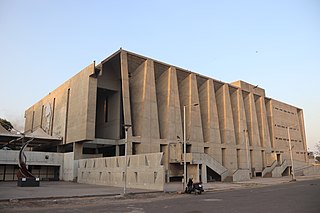
Tagore Memorial Hall, also known as Tagore Hall, is an auditorium in Ahmedabad, India. It is designed by B. V. Doshi in 1961. It is an example of brutalist architecture. Construction started in 1966 and was completed in 1971. It was renovated in 2013.

British industrial architecture has been created, mainly from 1700 onwards, to house industries of many kinds in Britain, home of the Industrial Revolution in this period. Both the new industrial technologies and industrial architecture soon spread worldwide. As such, the architecture of surviving industrial buildings records part of the history of the modern world.
Atmaram Mancharam Gajjar (1901-1961) was an Indian architect from Ahmedabad, Gujarat.






















